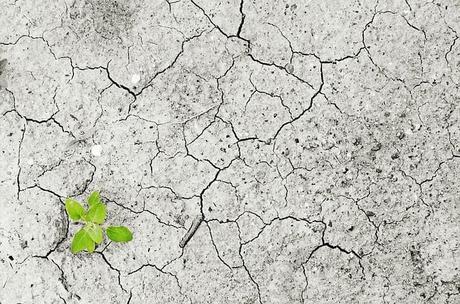Ever since mankind stopped being hunter-gatherers and settled down to grow crops and raise livestock and poultry. The overall effects on health and wellbeing has been positive. With the advent of Industrialisation in the late 18th and 19th centuries, however, the amount of carbon dioxide pumped into the atmosphere due to the wanton burning of coal, oil, and petroleum has caused negative changes to the climate.
While a little warming may help some plants to grow faster and increase production is some areas, the overall effect over the years – especially with the release of other greenhouse gases such as methane and CFCs (Chlorofuorocarbons) – has been a change in the climate that is detrimental to overall agricultural production.

One of the major effects of climate change is the adverse effect it has on natural processes. Most food crops are flowering plants and climate change is altering the cycles of the flowering process. Even businesses dealing with decorative flowers for weddings and funerals are starting to feel the pinch.
Since most of these flowers are seasonal, the business has been severely affected. Danny McBride from Funeral Flowers has noticed this phenomenon.“We have experience with all sorts of flowers and we have never seen this before,” he says “It is only a matter of time when we will see climate change starting to affect other species in our world.”
Overuse of poisonous pesticides and fertilizers, failure to maintain soil moisture and water availability all pose challenges to agriculture. Climate change has also changed the severity and frequency of floods and drought posing further challenges to food security. Changes in technology and farming practices also play a role.
Effects on Flowering Plants
Most of the crops grown for food are flowering plants. Flowering in season allows for the plants to be pollinated by bees and other insects and bords such as hummingbirds. Despite improvements in farming technology that can improve yields, Natuer still plays a major part in the process.
Increased temperatures have impact on a crop’s optimal growth period. While some crops may show increased yields, most food crops will experience negative effects on the amount and quality of yields. One reason for this is that the crops will produce flowers earlier than they usually do. This, in effect will affect the amount of pollination happening in flowers, as the insects and birds will not be around in sufficient numbers to do what they do naturally. The early flowering of crops happens ut of synchronization with the migratory patterns of birds and insects.
An additional effect of rising temperatures on crops is reduced yield if sufficient atmospheric moisture and nutrients are not available. Studies have also shown that increased CO2 levels reduce the amount of protein in harvested crops, which in turn affects yield quality. When this is considered in tandem with reduced grain and fodder quality, the livestock industry is also adversely affected.
Technology can assist in this area, but can only have a limited effect. Not all crops can be produced in controlled environments such as greenhouses and vertical farms. Also, these methods of farming add significantly to the cost of growing food crops and raising livestock.
Extreme temperature rises and flooding events will prevent crops from growing. What’s worse, many pests, fungi, and weeds tend to thrive in warmer temperatures. The knock-on effects this could have on pesticide and herbicide use would only worsen the situation, causing pollution of soil and water bodies, affecting both land-based agriculture and fisheries. In addition, many pests and diseases that affect livestock also thrive in warmer temperatures. Coupled with less nutritious fodder, livestock production would be adversely affected.
The Way Ahead?
Scientists have been warning the world about the effects of climate change and the role CO2, methane and other pollutants are causing. However, world governments and the fossil fuel industry and big agriculture have consistently denied the evidence. The world is quickly heading over the precipice of runaway extreme weather events, flooding of coastal cities, drought, conflict, and mass migration.
A simple mitigating method could be the adoption of smaller-scale subsistence farming. Long-distance transportation of foodstuffs adds to the CO2 footprint of the products – and does nothing to reduce the prices of food. Distribution is also inefficient. Food wastage is rampant, with some countries reporting almost 50% of harvests going to waste.
Greenhouses, vertical farms, and distribution to within no more than 300 miles for most food would change the world for the better. Farmers’ markets are becoming a popular source for fresh, locally grown food and are much more environment-friendly, as they tend to produce food organically.
Without a radical change in the way we produce, distribute and consume our food, Earth is headed for a crisis of unprecedented scale. After all, Earth is our home and, so far, the only habitable planet within reach given our current technology – at least for another few hundred years.
It is worth considering the atmosphere of Venus. Our nearest planetary neighbor is almost identical in size and weight as Earth, but the similarities end there. For several decades, ever since it was observed closely, Venus has been in the throes of a runaway Greenhouse Effect.
The clouds in the sky consist of CO2 and sulfur dioxide and it rains sulphuric acid and methane. The temperature on the surface is over 340 degrees centigrade, and the atmosphere is 9 times as dense as Earth’s. No one yet knows how this process started, but the theory is that the CO2 in the atmosphere blocked the sun’s rays from being reflected back into space. The rest just started like an unstoppable machine. And we continue pumping both gases into our atmosphere. Is that to become our legacy to future humans?
Remember, there is NO Planet B!

